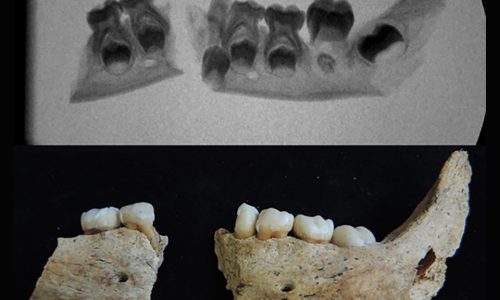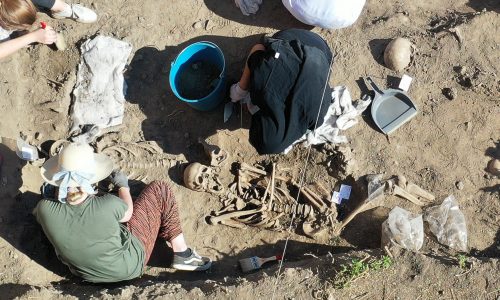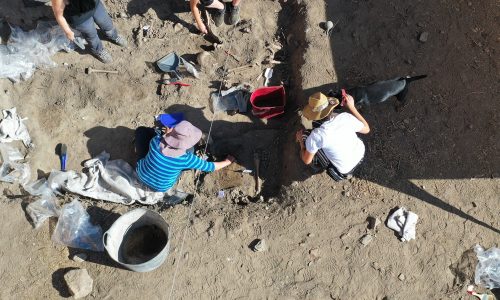July 22 to August 3, 2024
COURSE DESCRIPTION
With an eminently practical approach, the theoretical classes will be daily lectures (1-2 hours maximum) focused on the knowledge of the method of study of secondary cremation burials, from the field work, the micro excavation of the urns and the identification, classification and management of the skeletal remains. We will work on the identification of the remains from the physical anthropology, but also taphonomic observations of different kinds in the search for ritual gestures.
The price is established on a weekly basis. It will be possible to attend both weeks or just one week, the first week, where most of the theoretical load will be concentrated.
This is not just another "pay to excavate" proposal. It is a practical and theoretical course, led by university professors and professionals, with specific topics of the discipline for those who want to deepen in a practical way in the excavation of a cremation necropolis and in the analysis of cremated human skeletal remains.
EXCAVATION SITE
Celtiberian cremation necropolis of Los Algarrobales (San Miguel de Bernuy, Segovia).
The III Theoretical-Practical Course for the Study of Secondary Cremations, organized by OsteoResearch, will be held in two weeks, from July 22 to August 3, 2024.
The excavation will take place in the Celtiberian Necropolis of Los Algarrobales, in the town of San Miguel de Bernuy (Segovia) and
The laboratory in a rural house in the same town where the lodging will also be located.
This necropolis is the cemetery of the Celtiberian oppidum of Los Sampedros (San Miguel de Bernuy, Segovia), a settlement in the upper valley of the Duratón River occupied between the 1st Iron Age and the Roman period, and which since the 4th century BC has formed a small pre-Roman urban center in this area south of the Duero River. Excavations in the necropolis have so far documented the Full-Late Celtiberian phase, between the IV-III centuries BC, which are associated with cremation tombs, with grave goods with civilian and military furniture, at the time of greatest strength of urban settlement.
TEACHERS
The professors of the course are university teaching professionals with proven experience in the field of Physical Anthropology, Archaeology and Paleopathology.
- Dr. Victoria Peña Romo. Expert in cremations. Work on funerary urns in several pre-Roman and Roman sites in Spain and Carthage (Tunisia).
- Dr. Santiago Martínez Caballero. Director of the Museum of Segovia.
- Dr. Jesús Herrerín López, Universidad Autónoma de Madrid. University of Alcalá de Henares, Madrid.
TEACHING
Mornings: practical work at the archaeological site from 8 am to 12 noon under the supervision of the teachers.
Afternoons: The practical and theoretical classes will take place in the laboratory, with specific themes for each day.
Working days: Monday to Saturday.
The maximum number of students will be 8. Admission will be on a first-come, first-served basis. Students may confirm their participation in the course at any time after April 2024.
ACCOMMODATION:
Rural Houses in the town of San Miguel de Bernuy, Segovia.
The costs of education, maintenance, accommodation and medical insurance are included in the price and will be borne by the Organisation.
The cost of transport to San Miguel de Bernuy at the beginning and end of the course is NOT included in the price.
The students will be accommodated on a full board basis, one kilometre from the excavation site and in the village of San Miguel de Bernuy, an important tourist enclave in the province of Segovia, and 65 kilometres from Segovia capital, a World Heritage City.
PRICE
Price 290€ per week of course, to choose between the first or the second week (preferably the first week).
For students who wish to enroll for both weeks, the total price will be 500€. Maintenance and accommodation will be included for the weekend of July 28th.
Characteristics of the course
- Conferences 0
- Questionnaires 0
- Duration 14 days
- Skill level All levels
- Students 15
- Evaluations Yes
Features
- To know the different contexts in which human bones can be found and excavated.
- To know the current legal framework for the treatment of human bones and funerary rituals in different cultures.
- To understand the role of the archaeologist and the physical anthropologist from field excavation to laboratory study.
- To know the main parameters for a correct anthropological and palaeopathological report on a burial site.
- Understand the use of tools applicable to anthropological study, both in the field and in the laboratory.
- To understand the influence of taphonomy on the state of conservation of bone remains.
- To learn and broaden knowledge of palaeopathology from a theoretical and practical point of view, led by specialist lecturers.
- To understand the different processes of natural mummification in different archaeological contexts.
- To deepen the knowledge of the process of Mummification in Ancient Egypt, based on the latest knowledge and the most modern research techniques, carried out by the teachers of the course.









